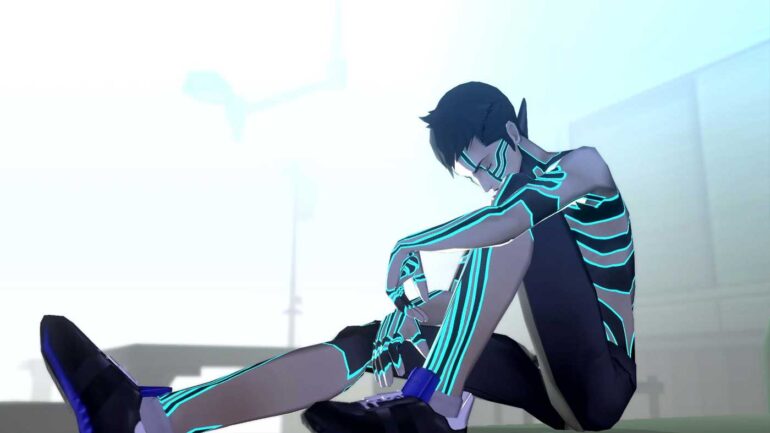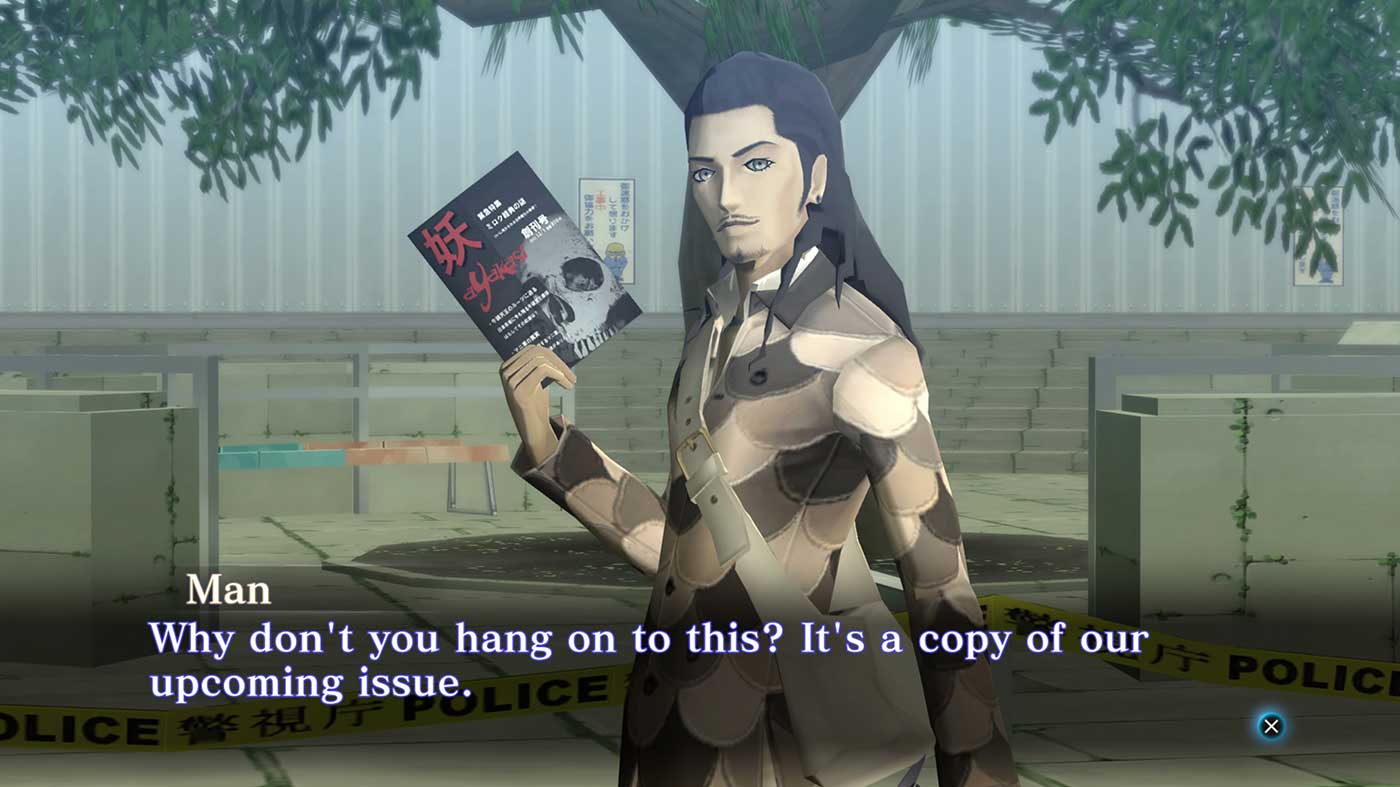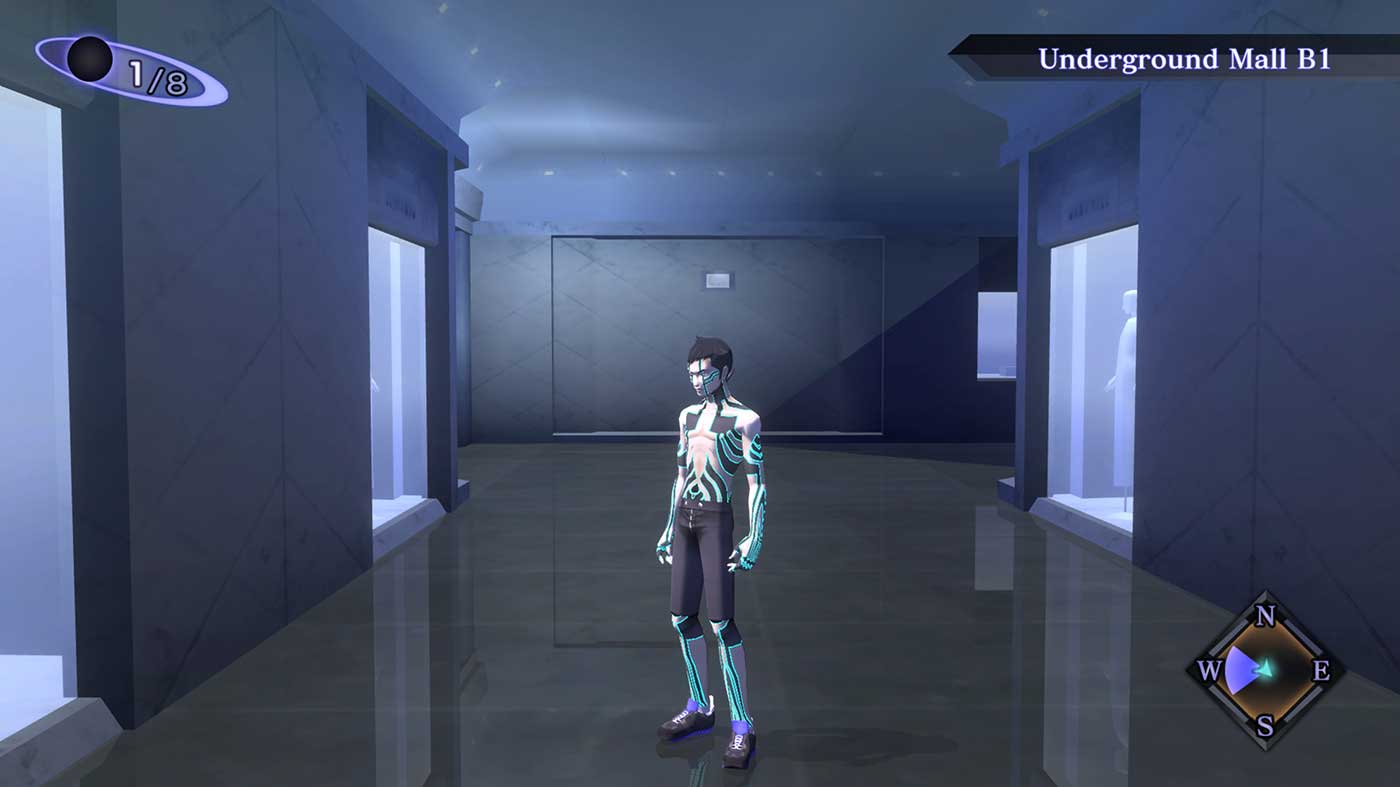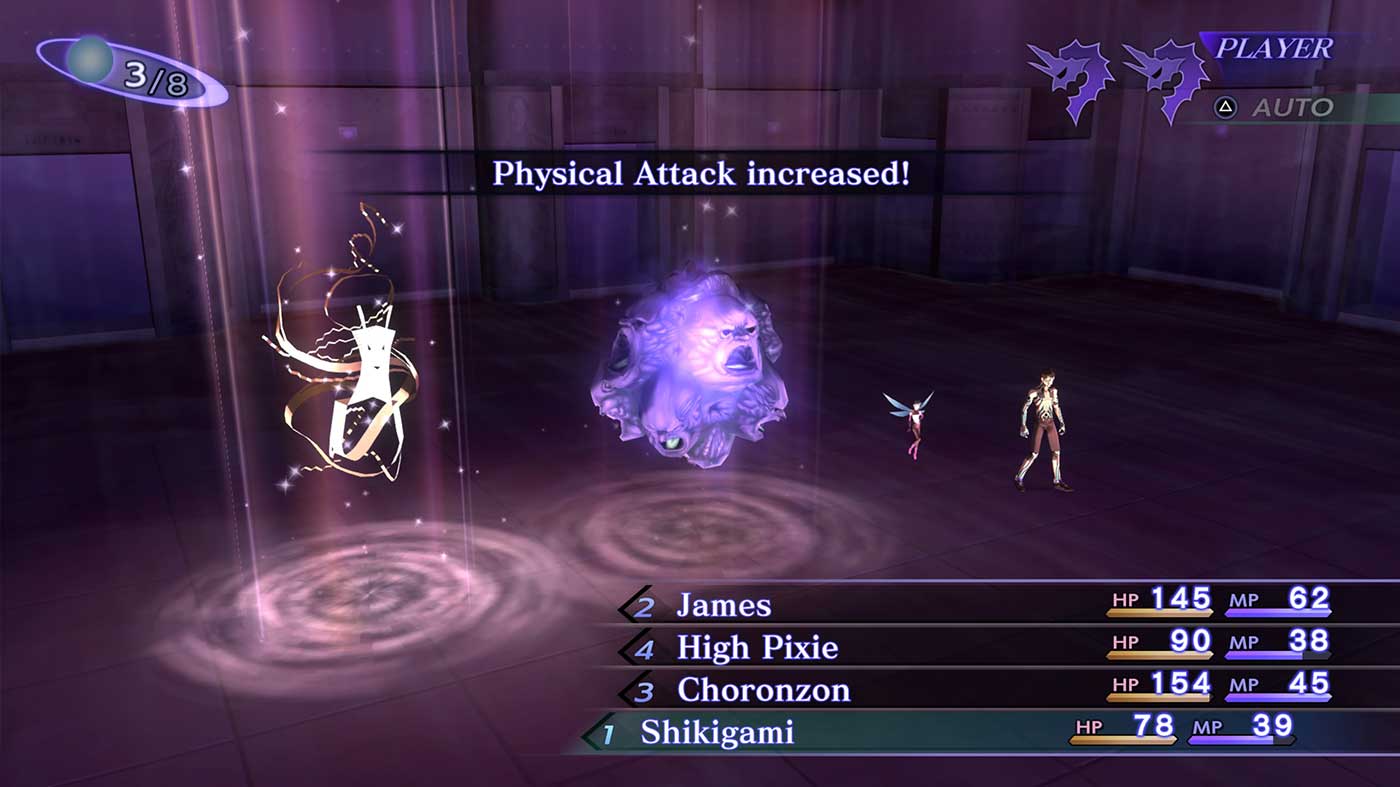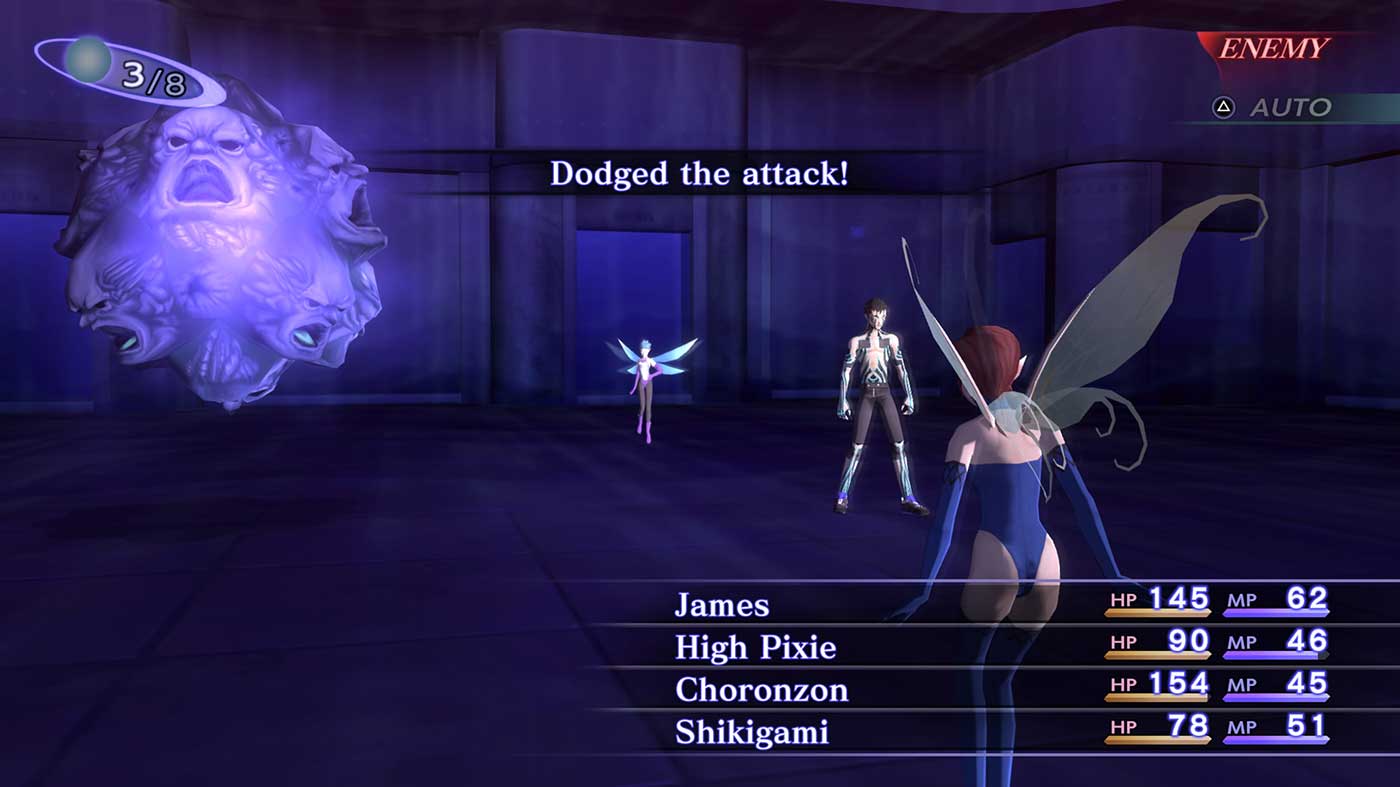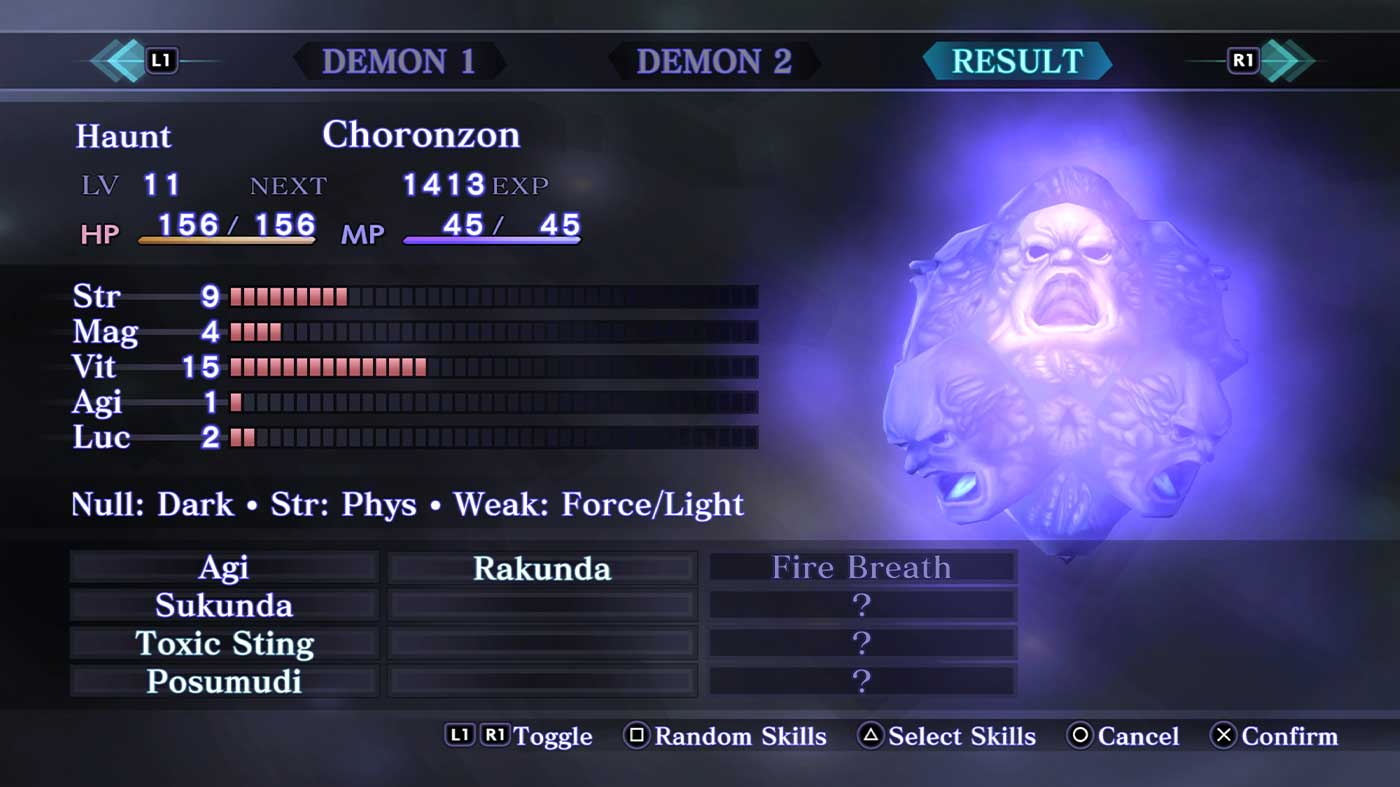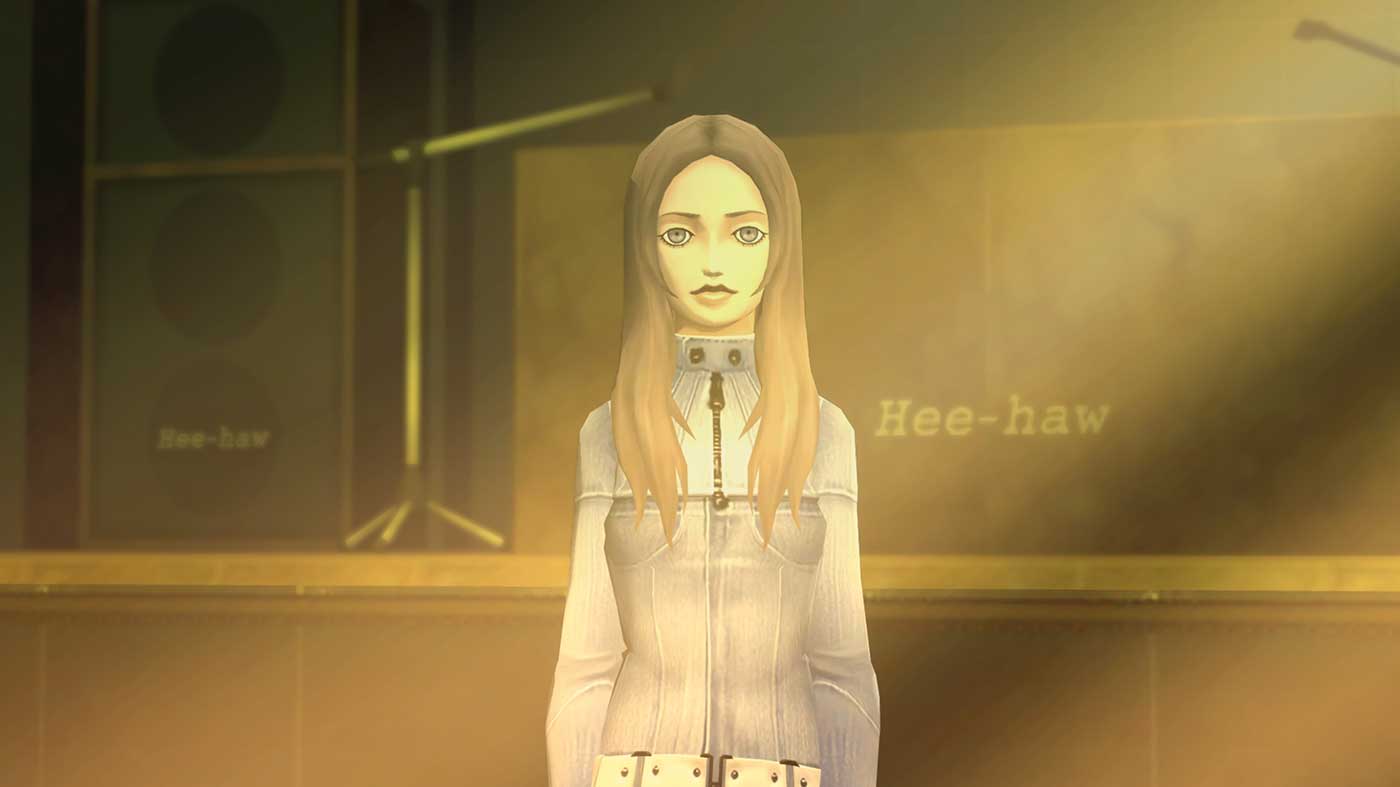Shin Megami Tensei is one of the first RPGs I played properly, but I feel like it’s almost faded to the background a little bit in recent years. Almost ironically, its spin-off series, Persona, has come to the foreground of the Atlus landscape to win a place in most genre fans’ hearts. But until now, the Shin Megami Tensei series has been mainly relegated to handheld status. Now, with a little bit of time and care, Shin Megami Tensei III: Nocturne, the game that started it all outside of Japan, has been given the HD Remaster treatment since it appeared on PlayStation 2 over a decade ago. It’s not the most perfect of HD Remasters, but it does a lot to make the game a whole lot more playable.
Our preview takes place in the opening moments of the game. But if you’re not a fan of the original, let’s just quickly recap. Nocturne follows an unnamed protagonist. In the opening moments, you return to Tokyo to visit your sick teacher in hospital along with two other friends. Once you get to the hospital, one of your friends disappears and you’re left to explore the hospital for them. The hospital itself is abandoned, and there’s more than meets the eye here, and anyone who played the original knows where the story goes.
Shin Megami Tensei III: Nocturne was probably the first Atlus jRPG to “make it big” outside of Japan. Like mentioned before, it’s also the series that eventually was spun off to create the Persona series, which I’m sure any fan of RPGs is aware of. With that in mind, it’s clear to see so much of the Persona DNA is here in Shin Megami Tensei. Not only is there turn-based combat, but there are enemies to battle that can also be lured onto your team. Like a demonic Pokemon of sorts, if you will.
With the HD Remaster of Nocturne comes a slew of improvements. The biggest thing, and perhaps the biggest contributor to the huge gap between the Japanese release and this one is voice acting. The majority of the game now has full English and Japanese voice acting, bringing it up to parity with more recent releases like Persona 4 and 5. This is a great way to make the game feel modern, though this brings with it a little bit of a jarring issue. The cast can be named whatever you want, but the script hasn’t been updated with monikers to refer to each character. As a result, every sentence talking about friends literally refers to individual people as “my friend” or “our teacher”, which comes across as a bit stilted in scenes that seem a bit more emotional.
It’s a bit of a weird nitpick, but I can imagine as the story progresses and the stakes are raised that it’ll become even more jarring. I rarely refer to my friends as “my friend” to their faces when I need to address them, so it’s bizarre when it happens here.
After exploring a bit, your character is introduced to the magatama, demonic parasites that he can ingest to influence his skills and abilities. It’s all a bit gross, but then I’m a huge fan of the uncomfortable imagery it evokes, which is almost a staple of the Shin Megami Tensei (and early Persona) games. It just makes everything sound and feels so otherworldly. Each magatama not only influences the player character’s resistance and abilities learned but also passive buffs and debuffs in battle. Our preview opportunity only lets us play with one, but fans of the original game will know there are over twenty to play around with to ensure your character can do the best in every battle.
Like I alluded to earlier, the rest of your party is made up of creatures that you can woo over to your team. With your character’s condition, you can converse with the demons to ask them to join your team. It’s a little more civilised than a Poké Ball, but you still have to be careful how you approach each situation. Some monsters will only speak to ones of the same race, others will ask questions that you have to get right, while some will ask for items before either joining you or leaving hurriedly. There’s no sure-fire way to build your party, but building your party is tantamount to your success.
This is no truer than when fighting the boss of our preview session. His name is Forneus, and he’s a flying manta ray type that is weak to thunder. For some reason, at that point in the game, I’d not had any demons weak to thunder. But going back and doing a bit of grinding, and a bit of recruiting, and I realised how important it was to play to type in Shin Megami Tensei III.
The battle system, while not as fast-paced as other turn-based RPGs, favours if you play against your opponent’s weaknesses. Every time you exploit a weakness, you’re granted an extra turn, which really encourages you to work out and break down your enemy type to sometimes battle without your enemy even attacking. It’s a clear precursor to the “Once more” mechanic in Persona, but one that helps keep battles running quickly.
After leaving the hospital, we eventually arrive in Shibuya and are treated to my favourite part of the game and one of my favourite aspects of Persona. Shibuya is home to a few standard facilities you find in any RPG – places to heal, buy stuff, and the like. But there’s also the Cathedral of Shadows. Much like The Velvet Room in Persona, it’s here that you can merge your captured demons to create more powerful ones.
What’s new in this HD Remaster of the game is the way skills are inherited from creatures. You can now properly select what skills will be inherited when fusing your demons together. It’s a small adjustment to the original game but one that lets you build your team the way you want to. I’m excited to play a bit more, recruit a few more demons, and really “break open” this system to create a team that best complements my main character.
Other features that I didn’t use as much but are sure to come in handy with the full release are appreciated. For one, you can now quit at any point to “suspend” your game without having to look for a save point – a huge boon to players for when you’re stuck in this game’s big and sprawling dungeons. Similarly, if you’re struggling, there’s a new easier difficulty mode that you can switch to at any point, which newcomers will no doubt appreciate.
And yes, Dante from the Devil May Cry series is in this game too, as a recruitable character no less. But we were only introduced to him in this preview period.
Putting everything aside, I can’t help but feel that there’s a bit of a missed opportunity here though. This remaster, at least on the PS4, runs at a solid 30 frames per second. Cutscenes are presented in a 4:3 ratio with stylised borders. I’m not sure of the specifics related to the cutscenes being presented in such a dated manner, but this certainly feels like a game that could hit 60 frames per second on modern hardware. I’m aware the Japanese release had spotty performance and an unlocked framerate, but the game’s current performance makes it feel slower than it needs to be.
But that’s about where our preview ends. It was always going to be a challenge to bring a game from 2003, in a genre that’s seen so much evolution, to a modern audience. But Shin Megami Tensei III’s HD Remaster implementing so many small but impactful quality of life improvements to the fold is to be commended.
While it’s not quite the visual overhaul that I would like, Shin Megami Tensei III: Nocturne’s HD Remaster is still the best way to play the game and a must for any fan of games like Persona.
Shin Megami Tensei III: Nocturne HD Remaster launches for PlayStation 4 and Nintendo Switch on the 25th May 2021.


